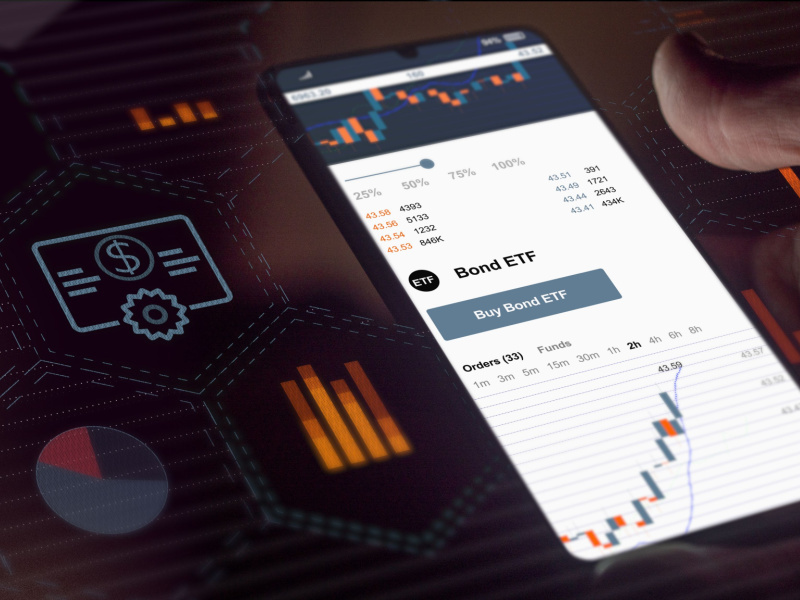
The covid pandemic gave a huge hit to the world economies and put many on a ventilator. The world was collectively coming out of the after-effects of the pandemic and the Russia-Ukraine war further put the world in dark, literally. The direct impact of these incidents is the rising inflation in the world that is eating away at the returns that moist investments provide. Therefore, an investment option that provides inflation-adjusted returns is the need of the day and will definitely be preferred by investors.
Inflation-Indexed Bonds are among the debt instruments that can provide better returns for the investors at large. Given below is the meaning of Inflation-Indexed Bonds available in India and other related details of the same.
What are Inflation Indexed Bonds (IIBs)?
Inflation-Indexed Bonds are the bonds in the nature of debt instruments that are issued by the RBI. These bonds were first issued by the RBI in 1997 and were known as Capital-Indexed Bonds as a way to provide returns that are inflation-adjusted and protect capital investment. The coupon rate of these bonds was mentioned in real terms, i.e., real rate. However, they received a lukewarm response on account of the complexities involved in the instrument’s pricing and protection provided only for the principal amount. These bonds were introduced by RBI as an instrument to combat the rising inflation and discourage investment in gold which was making India a heavy gold importer in the world and directly impacted the foreign reserves.
In 2013-14, RBI reattempted to introduce the Inflation-Indexed Bonds linking the product to WPI (Wholesale Price Index). These bonds provided a bond yield of 1.44% but the response was still not so good. The government then moved to formally accept CPI as the inflation target and the direct impact of the same was that the series became virtually redundant. Therefore, the government had to buy back these securities which cost them a whopping Rs. 6500 crores.
Read more: How to make your monthly budget inflation proof?
How do inflation-indexed bonds work?
Like any other government-issued bond, these bonds have a relatively lower risk. These bonds are issued for a tenure of 10 years. The coupon rate of these bonds is fixed and the principal amount is linked to the inflation rate. This reduces the impact of inflation and safeguards the interest of the investors. Any fluctuation in the inflation rate is adjusted in the principal amount and the coupon rate is calculated on the adjusted principal. The interest payment on these bonds is paid at the interval of six months. Inflation-indexed bonds have a fixed maturity period of 10 years but the investors will be allowed to exit their investment prior to full tenure as these instruments can be traded like any other government security.
Let us consider the following example to understand inflation-indexed bonds better.
- Assume an investor has invested in bonds with a face value of Rs.100 with a coupon rate of 7%.
- If the inflation at the time of making the interest payment is 8%, then the principal amount is adjusted for such inflation, and interest is paid to the revised principal amount of Rs.108.
- The interest payment will therefore be Rs. 7.56 instead of Rs. 7 if the inflation rate was not adjusted.
Also read; What is the connection between stock prices and inflation?
How are inflation-indexed bonds taxed?
RBI has specifically mentioned that the inflation-indexed bonds will not carry any special rates or benefits under taxation. This implies that these bonds will be taxed in line with any other debt instrument issued by the government.
The taxation of these bonds will depend on the tenure for which the bond is held and the prevailing taxation rate for such time. The detailed taxation of these bonds is tabled below.
| Type of gain | Period of holding | Tax rate |
| Short Term Capital Gain | Less than 36 months or 3 years | As per applicable slab rates |
| Long term capital gains | More than 36 months or 3 years | 20% (after the benefit of indexation) |
What are the key advantages of Inflation Indexed Bonds?
The key advantages of Inflation Indexed Bonds that make them an attractive option for investors are highlighted below.
- These bonds provide real returns which means that the returns are inflation-adjusted and can actually benefit the investors.
- Being backed by the Government, these bonds are of virtually no risk and therefore are an excellent investment option for risk-averse investors or investors with a long-term investment horizon.
- Inflation-Indexed Bonds are one of the major sources of funds for the Government. These funds can then be used in various infrastructure projects or other socio-economic activities.
- The inflation rate is adjusted in the principal and hence, the capital investment is always protected.
- Inflation Indexed Bonds also make a good addition to the investment portfolio on an individual level or in mutual funds as the overall risk of investment is reduced.
Conclusion
Inflation Indexed Bonds were last issued in the country in 2013-2014 but have not been successful in their attempts. These bonds were originally issued based on the WPI but were later shifted to CPI. Any similar bonds that RBI will issue in the near future will also be based on the CPI (Consumer Price Index). The government should also learn from its past mistakes and come out with a product that will better attract today’s audience, something that is of relatively lower tenure at least till the product becomes popular. Adding a few tax benefits will also be a good selling point for these bonds.
FAQs
No. There are no special tax provisions for Inflation-Indexed Bonds.
The retail version of Inflation-Indexed Bonds was the CPI-Linked National Savings Securities which has a coupon rate of 1.5%. The interest is provided on a half-yearly basis and offered protection on the principal amount as well as interest.
The earliest Inflation-linked bonds were issued in 1997 and were named Capital-Indexed Bonds which provided protection only against the principal and not on the interest payment.
Yes. Inflation-Indexed Bonds are in the nature of government securities and can be easily traded by investors.



























